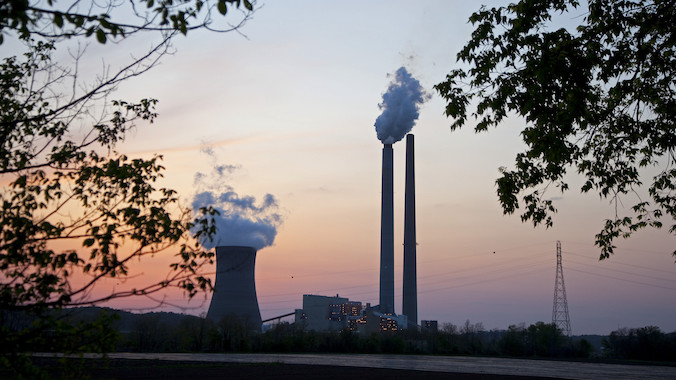‘Abandoned’ Is the Natural State of Major Carbon Capture Projects
Photo by Jim West/imageBROKER/Shutterstock
This week, Canadian company Capital Power announced that it will stop development of a $2.4 billion carbon capture and storage project at its Genesee power plant, a coal-turning-to-gas behemoth that is among the larger generating stations in the country. This is less a failure and more a return to normalcy.
Energy companies and utilities love to announce huge carbon capture projects. They sound impressive, and clean, and very much like the future; if we can’t turn off every fossil fuel power plant in favor of solar or wind power tomorrow, capturing the carbon dioxide as it leaves the smokestack and storing it somewhere safe seems like the next best thing. Unfortunately, energy companies and utilities also love to abandon those projects, often before they ever capture a ton of CO2.
There are the big-ticket versions, like the Department of Energy’s carbon capture poster child FutureGen, canceled in 2015. There was the $7.5 billion Kemper plant, intended to show that coal could actually be burned cleanly, only to see that half of the plant literally blown up once it became clear the economics and maybe the actual technology wouldn’t pan out. There are alternative measures like the Heartland Greenway, a pipeline that would have carried 15 million tons of captured CO2 from ethanol plants to a storage location, abandoned last October.
Those smokestacks in the image above are the Mountaineer plant in West Virginia, home of a $668 million carbon capture demonstration — abandoned in 2011, though the plant still happily burns its coal. And there are even functioning carbon capture plants, like Occidental Petroleum’s Century plant in Texas, which apparently so appalled its owner that the company sold it for cents on the dollar in 2022.
Some carbon capture facilities do exist, like the Century plant. But not very many of them, and they don’t really work that well. A 2022 report found that working facilities are actually capturing far less than they promised to capture — 36 percent less at ExxonMobil’s LaBarge facility in Wyoming, 50 percent less at Saskatchewan’s Boundary Dam generating station, 50 percent less at a Chevron pipeline capture scheme in Western Australia, and so on.
And even with the underperformance and the hefty diet of cancelations, money is flowing steadily into new attempts at this decades-long boondoggle. The Biden administration has made expanding carbon capture and making it economically viable a critical piece of long-term climate plans; the Inflation Reduction Act raised the subsidy for capturing a ton of carbon from $50 to $85, in an attempt to temper the industry’s abandonment instincts and spur further development.
But this is now several decades into meaningful attempts to make carbon capture a big part of the emissions landscape, and any given headline is more likely to be about a failure than it is about a success. The idea that gas-fired power plants with highly functional capture tech will dot the landscape within the next 25 years or so is both directly baked into U.S. and global climate plans and also patently absurd. Each subsequent cancelation is not a surprise; it’s the industry correcting a temporary blip toward progress.